This last weekend (6/7/08), I went back to the Dry River area with Dick and Jim. We initially intended to fish up Blacks Run, marked on the Virginia Area 1 trout map as wild trout water. Upon arrival, we found our way blocked by signs that declared the access road as a “private drive” and posted for no trespassing. While I believe those signs are bogus, we respected them and turned away. I’ll try to confirm that status later.
But, for this day, it was not a problem, we already had a backup plan because we did not know whether Blacks Run would be a decent day of fishing. In fact, the flow where the Black feeds the Dry River west of the town of Rawley Springs looked pretty slim. From previous visits, I knew that there was plenty of good water in the Dry River valley that would consume the entire day. Since we were interested in brookies, we went up to the Skidmore fork of the Dry River. I intended to complete the analysis that I started earlier but had been rained out (see this post for the Upper Skidmore Fork). As we pulled into the parking area, Dick asked, “Should we go upstream or down?”. It occurred to me that I had not been downstream yet and needed to see that stretch. To even the pressure, I headed down, and Dick and Jim pointed upstream. Thirty yards into my hike, I discovered that this section of the River was markedly different from what I had seen up near the dam.
The first thing that literally slapped me in the face is that this is an intensely physical stream. There is no trail. There is plenty of brush! All of that brush anxiously defends this stream as it claws to grab any loose equipment. Anyone coming here to fish needs the patience and physical stamina to bushwhack their way downstream far enough to begin to work back up. The water is so small here that if you took the lazy approach of wading downstream, you would immediately spook all the trout in the pool. We only had a limited amount of time, an hour, before we moved on to our next spot, so I was in a hurry.
As I beat my way through the thick forest, I would periodically veer back to the River to see what it looked like. What consistently lay in front of me was a tight stream under a vibrant canopy of trees that would demand any fisherman be proficient in technical casting to cover all the likely spots. In many places, there is no room for error. The new fly guys among us will be limited to throwing straight upstream or down. I continued downstream as far as I could go and had any hope of getting back to the truck at the appointed time.
While the upper section of the Skidmore is a high gradient, narrow stream, the river changes character at the parking lot as it spreads out to roll through the valley. Luckily, the riverbed has enough character to form decent-sized pools. From a distance, the deceptive clearness of the water might make you assume that it’s only inches deep. Instead, every pool is at least a foot or two deep, sometimes even more. The end of each pool is generally marked by a distinctive feature such as a riffle or fallen tree. In any case, there is always something interesting up ahead of you. At the point where I turned around. The river took a deep dive into a convoluted maze of fallen trees, which protected a sharp drop in the stream profile as it tumbled to reach a new level in the valley. Sadly, I was out of time and could not investigate what had to be a nice plunge pool at the other end.
Once I turned around, I tied on a mosquito pattern, and began to work the surface with it. These brookies were as hungry as they were small! There were plenty of them and I was amused by the constant snapping sound that they would make as they attacked my dry fly. The larger brookies would slam the fly with a full body attack while the smaller ones would merely nip at it.
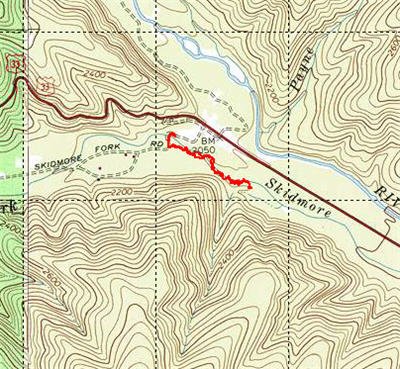
During the course of the day, we made observation that dry flies are the lure of choice in an area where nymphs may be the logical first assumption. The problem with nymphs in the Dry River basin is that the River is not deep enough to get a good drift with the correct amount of distance between the indicator and the nymph – the depth varies too much. I tried a dry fly with a midge dropper and was constantly getting hung up on the bottom. While there are deep spots, they are protected by shallow areas that will cause you an untold number of problems. Another thing that drove us to stick with dries was that the fish were happy with them. Given the relative shallow aspect of the river (a foot or two is not that much) the fish are close to the surface anyway which could explain why they jumped at the chance to eat anything floating by regardless of the sun or the heat.
Skidmore Fork of the Dry River Trout Fishing Bottom line: You are not going to catch a trophy here – this is micro-fishing. The typical fish in this stretch of water is five or 6 inches — that’s it. Given the size of fish, it would be an exercise in frustration to try to use spin gear. On this section of water, for fish this small, you need use lures that match their size. I did not see any bait containers or powerbait jars, and I imagine the size of the fish is the reason. You would end up using a 4 inch worm to catch a four inch fish – not much fun.
I’ll come back here. Given that the water spills from the tailwater of the Skidmore dam, there should be trout here all year long.
Note my ratings above. If you go here, be prepared for a tough, tough bushwack to get at these spots. Do not go here unless you are in shape.
Getting There: From Harrisonburg, take Rt 33 west. After you pass the town of Rawley Springs, you are within a few miles of the turnoff and need to stay alert. The turn is an unmarked dirt road at the base of the mountain that marks the border between Virginia and West Virginia. You will probably miss it on your first pass. Once you recognize you are climbing the mountain, turn around and go back. The first dirt road to the west (right) that angles sharply back towards the mountain is the one you want. Do not take the road about 30 feet down that heads off at a right angle. Follow it to the end and park in the wide parking area. The river is right in front of you.
Secrets Revealed? No. This is a public location that is documented in the following places:
Virginia VDGIF Skidmore Report
Flyfisher’s Guide to Virginia
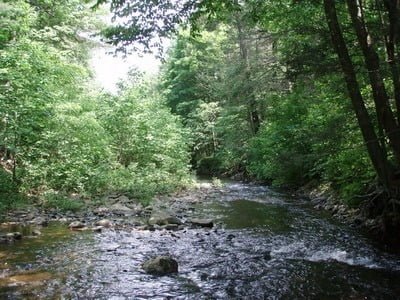
Riffle leaving a pool. The brookies hang in the rough water
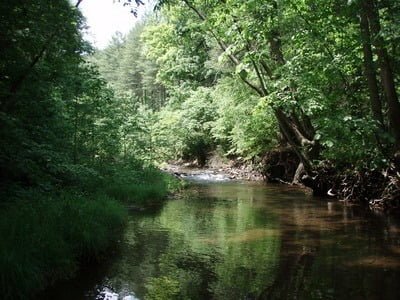
Typical pool with tight trees
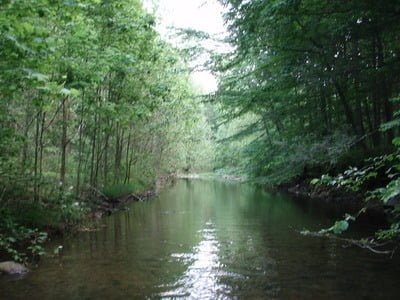
The “long pool”. I saw a monster brookie here – he had to be at least 8 inches long
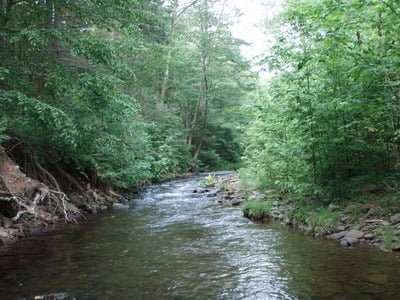
Tight cuts, fast riffles leading into most pools
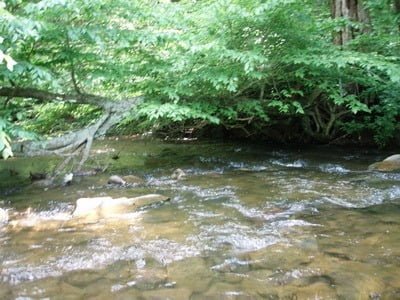
There are trout under here. I had to float a dry fly downstream to hook up with one. I did not even think about trying a cast.
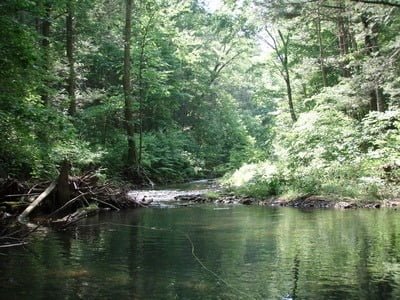
This is the deepest pool I encountered – probably 4 feet deep by the stump
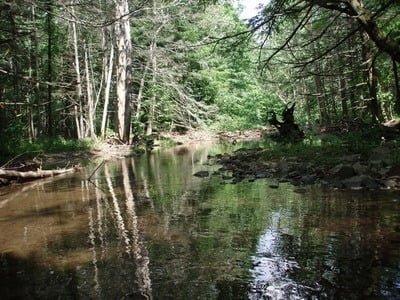
Water looks clear and shallow – it’s 2 feet deep here
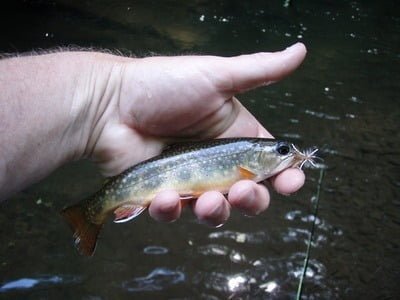
And the prize!
Unless stated otherwise, this article was authored by Steve Moore


